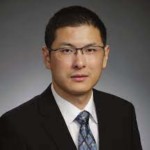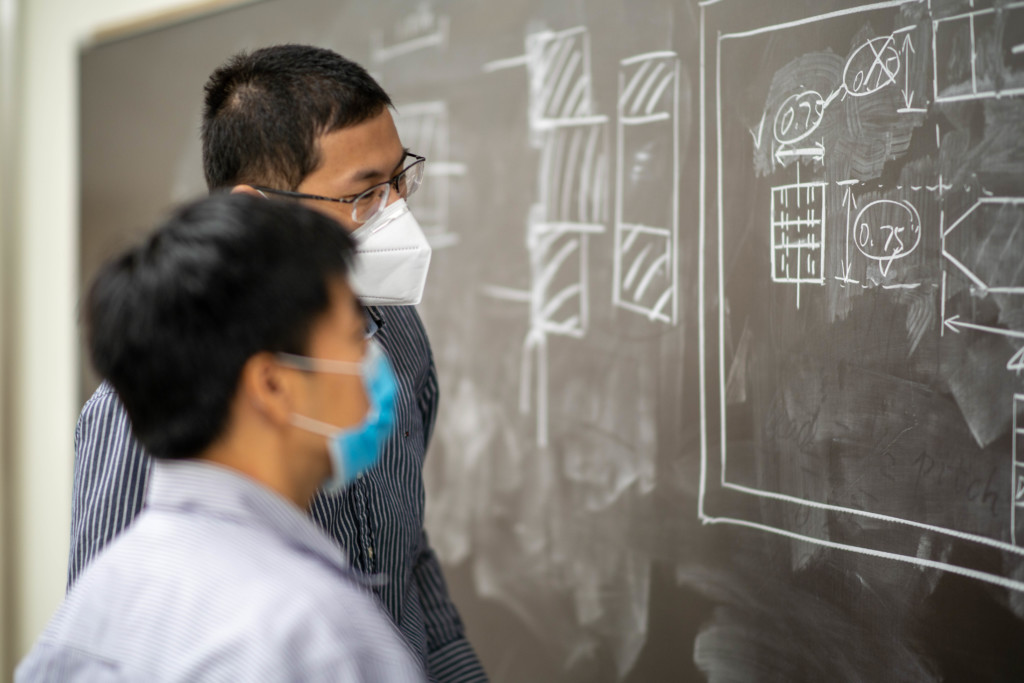PRAIRIE VIEW, Texas (November 23, 2021) – Fall Semester 2021 is proving to be one of the best academic terms for mechanical engineering Assistant Professor Jaejong Park, Ph.D. in the Roy G. Perry College of Engineering. He is beginning his fourth year teaching with a National Science Foundation (NSF) research awarded for $399,742.
“I am one of the most junior faculties in Mechanical Engineering. This is my first external grant as a PI,” Park said. “Of course, I was thrilled, and I still am excited! The fact that I get to lead a project that can significantly modernize and enhance the student learning experience in our department is just so cool.”
Park’s award—Targeted Infusion Project: Infuse Virtual Reality and Industry 4.0 into Design and Manufacturing Laboratory for Student-centered Learning Experience—is funded through the NSF Historically Black Colleges and Universities – Undergraduate Program (HBCU-UP). The HBCU-UP awards funding to campuses “to develop, implement, and study innovative models and approaches for making dramatic improvements in the preparation and success of underrepresented minority students so that they may participate in STEM graduate programs and the workforce.”
With this funding, Park and his Co-PIs Lai Jiang, Ph.D., and Xiaobo Peng, Ph.D., will enhance the engineering design curriculum and student manufacturing learning experience using Artificial Intelligence to complement the existing hands-on lab experience.
“We are grateful for the support from the NSF. This project will have a significant impact on our students,”shared Peng. “Students will gain knowledge on new topics related to manufacturing through internet interactive learning and training modules with rich evidence-based learning components.”
The elevated learning experience underway by the mechanical engineering faculty will elevate PVAMU graduates as well-prepared and highly skilled professionals in the industry they have chosen for their careers.
Vice President of Research & Innovation Magesh Rajan, Ph.D., P.E. said, “This AI & VR research project undertaken by Dr. Park and his team has so many benefits. Our students are receiving a modern, cutting-edge experience. The researchers now have a partnership with a federal agency to demonstrate their abilities to deliver solutions and innovations. This project increases awareness of Prairie View A&M’s research capabilities and creates future career and networking opportunities for students and faculty.”
The Park Project has two phases. Part One focuses on engineering education. The research will incorporate virtual reality (VR) into the lab experience with VR headsets for students. They will explore potential ways of employing VR for numerous research problems while also providing traditional hands-on experience.
“The virtual reality component of this project can benefit a wide variety of fundamental research,” Park explained. “For instance, virtual reality can be used in various numerical simulations to help better understand complex phenomena, enhancing design strategies.”
Dr. Jiang said the second phase of the grant will involve students 3-D manufacturing process where students begin building a project on a computer and send it immediately to the new 3-D printers for production.
“I will be participating in the research parts of the project by acquiring data points from the 3D printing process to be investigated,” said Jiang, who will also enhance the curriculum through this research project. “I am developing a new graduate course and a course module for an existing undergraduate course. I will also help in the involved outreach activities.”
The three researchers are also keenly focused on the impact of their research.
Jiang explained, “The public would benefit from participating in the workshops provided by the project. They will learn the cutting-edge advancements in additive manufacturing, which has the potential to be widely adopted by the industry and later become popular for everyone.”
While they are focused on mechanical engineering students for the study, Park believes the outcomes will not be limited to those studying engineering.
“I believe this new virtual environment will provide students the opportunity of robust and reliable hands-on experience,” Park stated. “A virtual reality environment can be utilized in many other classes, and we want to demonstrate its efficacy to the PV community to promote diversification of content delivery for better student long-term knowledge retention,” Park stated. “One day, soon, I envision that the infrastructure we develop from this project.”
By Michael Douglas






